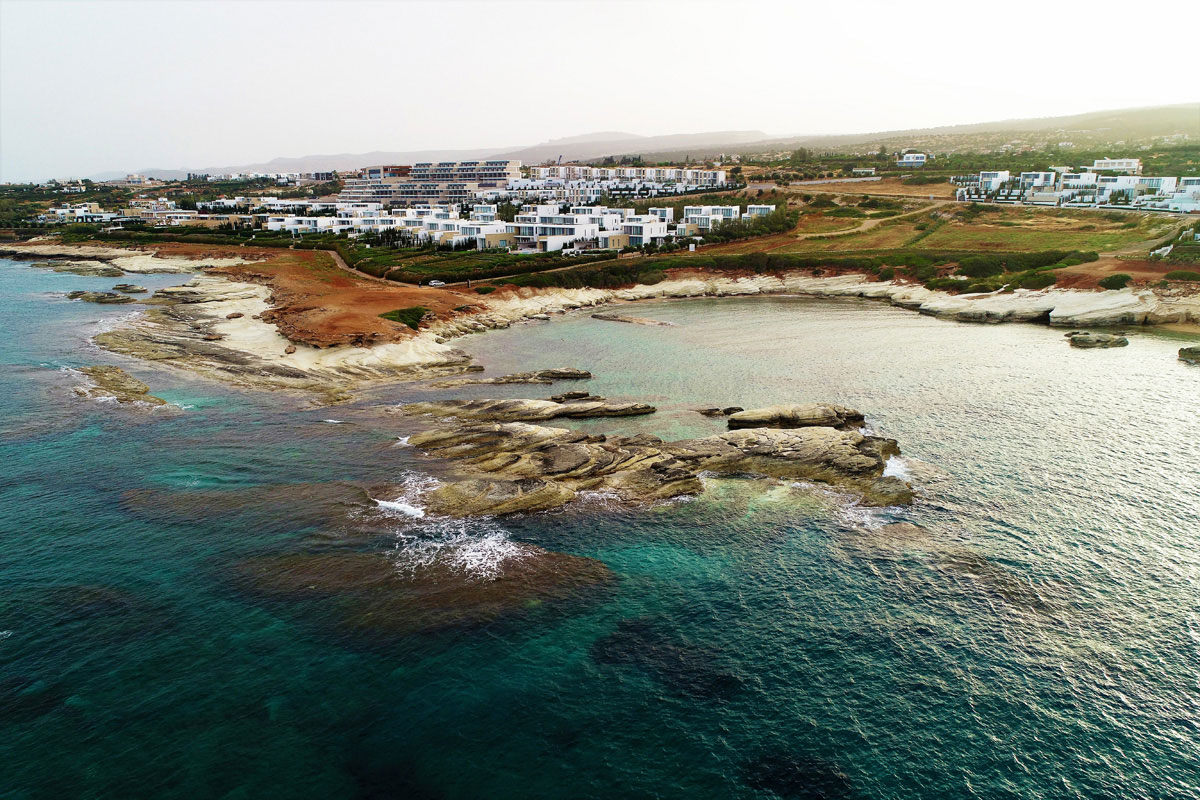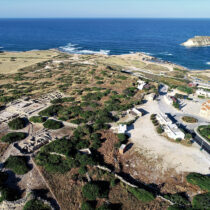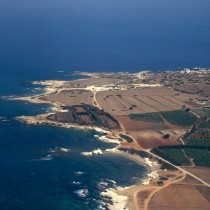The Department of Antiquities of the Deputy Ministry of Culture announces the completion of the three-month survey, excavation, and study program of 2023 at Agios Georgios tis Pegeias by the New York University Geronisos Island Expedition, under the direction of Joan Breton Connelly, Professor of Classics at New York University. Archaeological excavation was conducted at Maniki Harbor, at the Meletis Necropolis, and atop Geronisos Island, along with comprehensive study of excavated materials in preparation for publication.
The harbor, island, and mainland coast of Cape Drepanum constitute significant cultural treasures of the Republic of Cyprus, renowned for their natural beauty, ecological diversity, and historic significance. The small ‘pocket harbor’ of Maniki holds special meaning for the local community of Pegeia and generations of fishermen for whom it is a longstanding ‘place of memory’. From Hellenistic times onward Maniki Harbor served as the main port of departure for the island of Geronisos. During Early Byzantine times it served as the arrival port for the great Justinianic basilica site on the Cape Drepanum acropolis.
An international team of scholars and students took part in the multi-disciplinary program of excavation and research. Dr. Stella Demesticha, Associate Professor of Maritime Archaeology at the University of Cyprus undertook typological and quantification analysis of the vast deposits of late Roman amphorae, dumped along the shores of Maniki Harbor. The great majority of vessels are of Late Roman 1 type and of local Paphian manufacture. Significant imports include two types of Late Roman amphorae from the Levant, ‘Gaza Jars’ and so called ‘Palestinian bag-shaped amphorae’, pointing to important trade connections with South Palestine during the mid 6 th century AD.
Dr. Theotokis Theodoulou, Head of the Cretan section of the Ephorate for Underwater Antiquities in Greece and Dr. Alexandros Tourtas of the University of the Aegean have completed their comprehensive coastal and underwater survey of Maniki Harbor and the entire Cape Drepanum area. They have executed aerial mapping, 3-D modelling of the coast from the Sea Caves to the Aspros River, have lifted a series of stone anchors from the sea floor, and identified bollards for the mooring of ships.
Atop Geronisos itself, Philip Ebeling directed a team from Westfälische Wilhelms-Universität Münster in the photogrammetic documentation and excavation of a highly significant deposit of Hellenistic rooftiles. These are of both the Laconian and Corinthian type and indicate the importance and monumentality of the structures built on Geronisos. Architect Pieter Brouke, Professor of the History of Art and Architecture at Middlebury College, continued his study of the Geronisos limestone architectural blocks and mouldings.
The New York University team also concluded excavation of an important rock-cut tomb they first discovered in 2018 at the necropolis of Meletis, roughly half a kilometer inland from Agios Georgios. This family tomb represents the earliest of the burials at Meletis and was in continuous use from Late Hellenistic through Roman times, roughly from the 1 st century B.C. to the 3 rd , possibly early 4 th cent. A.D. Dr. Paul Croft, of the Lemba Archaeological Research Centre, headed the excavation of this tomb comprising a stepped dromos leading down to a main chamber with two loculi and two tetrasolia. The tomb’s abundant oil jars, jugs, laygnoi, table amphorae, and lamps are under study by Prof. Jolanta Mlynaczyk of the University of Warsaw, while Dr. Monika Miziolek of the Institute of Mediterranean and Oriental Cultures, Polish Academy of Sciences, is focusing on the Roman cooking pottery. A vast amount of glass and glass fragments were recovered and are being studied by Dr. Mariusz Burdajewicz of the University of Warsaw.
Dr. Efthymia Nikita, Assistant Professor of Bioarchaeology at the Science and Technology in Archaeology and Culture Research Centre, The Cyprus Institute, and her students continued their study of the tomb’s human skeletal remains. Preliminary results show a minimum number of 6 individuals (including 5 adults and 1 adolescent) buried in the tomb chamber as well as 4 infants (including 1 fetus) buried in a concavity at the base of the dromos, just outside the chamber. A team led by Athanasios Koutoupas of the Andreas Pittas Art Characterization Laboratories (APAC Labs) at the Cyprus Institute has completed full documentation of the Meletis tomb using 3-D scanning and photogrammetry.





